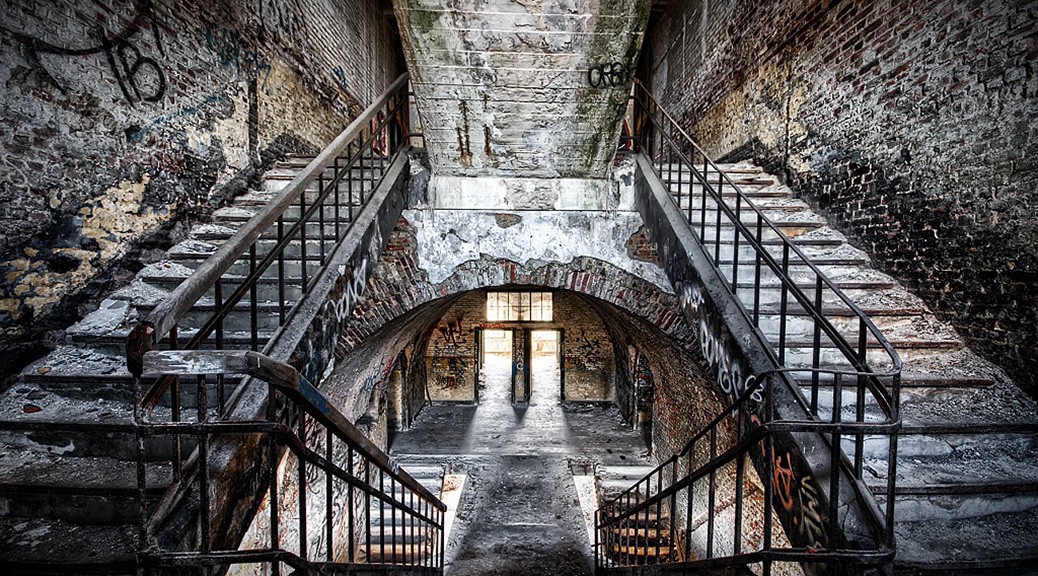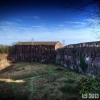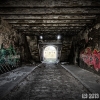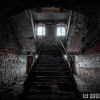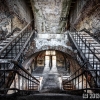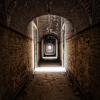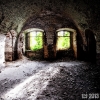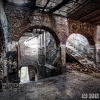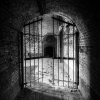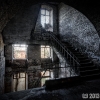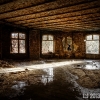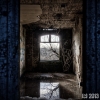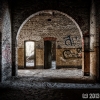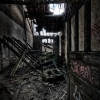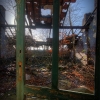![]() Das Fort de la Chartreuse befindet sich mitten im Stadtgebiet der belgischen Stadt Liège. Es wurde in seiner ursprünglichen Form von 1817-1823 durch die Niederlande erbaut (der belgische Staat wurde erst 1830 gegründet). Bereits kurz nach der Fertigstellung war das Fort aus militärischer Sicht veraltet und wurde daher nur als Kaserne verwendet.
Das Fort de la Chartreuse befindet sich mitten im Stadtgebiet der belgischen Stadt Liège. Es wurde in seiner ursprünglichen Form von 1817-1823 durch die Niederlande erbaut (der belgische Staat wurde erst 1830 gegründet). Bereits kurz nach der Fertigstellung war das Fort aus militärischer Sicht veraltet und wurde daher nur als Kaserne verwendet.
Während beider Weltkriege war das Fort jeweils in deutscher Hand und wurde als Gefängnis benutzt. Im ersten Weltkrieg wurden hier 49 Personen hingerichtet, weil sie die deutschen Truppen ausgekundschaftet hatten. Zum Gedenken an die Getöteten befindet sich auf dem Gelände eine Gedenkstätte, die auch heute noch gepflegt wird, und sich damit im krassen Gegensatz zum Zustand des restlichen Areals befindet.
1939 wurde die alte Festung durch mehrere modernere Bauwerke ergänzt, die allesamt gleich aussehen. Zum Ende des 2. Weltkriegs benutzte das US-Militär die Anlage als Lazarett. Nach Kriegsende wurde sie wieder vom belgischen Militär übernommen. 1988 wurde die Anlage aufgegeben und verfällt seitdem recht rasant. Es handelt sich auch heute noch um militärisches Sperrgebiet!
Besucht: Dezember 2013
![]() The Fort de la Chartreuse is located inside the perimeter of the Belgian city of Liège. It was built by the Netherlands from 1817-1823 (Belgium was founded in 1830). Shortly after completion, the fort was obsolete in a military point of view. Therefore, it was only used as barracks.
The Fort de la Chartreuse is located inside the perimeter of the Belgian city of Liège. It was built by the Netherlands from 1817-1823 (Belgium was founded in 1830). Shortly after completion, the fort was obsolete in a military point of view. Therefore, it was only used as barracks.
During both world wars, the fort was in German hands and used as a prison. In WW1, 49 prisoners were executed here because they had scouted the movements of the German army. For those killed, there is a memorial on the compound. The memorial site is still maintained, on contrary to the other parts of the fort’s area.
In 1939, there were new buildings added to the old fort. They all look the same. By the end of WW2, the US army used the fort as military hospital. After WW2, the Belgian army took back the compound. In 1988, the whole fort was abandoned. Since then, it is quickly decaying. Even today, it is restricted military land.
Visited: December 2013

